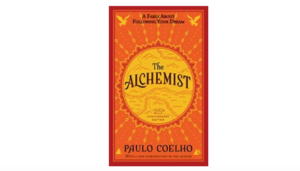Students need to have a good memory to do well in college. They need to process a lot of new information and retain it. Even if you have a good memory naturally, it still can be challenging to remember every little detail and date. This is where various memory techniques come in handy. In this article, you’ll find the most effective ones for college students to try.
Source: https://unsplash.com/photos/t0SlmanfFcg
Mnemonic Visualization
Visuals are much faster processed by the human brain. This is what a lot of mnemonic techniques are based on. Something associated with an image is much easier to remember.
So if you need to keep something in mind, imagine it as a visual representation. You can also make an image ridiculous or hilarious so that it is even easier to remember. This method works great for small pieces of information.
For example, you want to remember the name of the first man to ever walk the moon – Neil Armstrong. You can imagine a man on the moon with a nail (sounds similar to the name) in his strong arm (similar to the surname).
If you need a reminder to do something, like buy milk, imagine yourself entering a grocery store, and a huge bottle of milk is guarding the way so you cannot come in. The next time you enter the store, you will have this association and thus remember to buy milk.
This technique is useful to set a mental reminder, for example, if you need to do something on time. You won’t forget to take your keys or google: ‘write my paper’ for help just in time. Professionals will nail any type of college paper in time, whether you need writing, editing, or proofreading assistance. This is a great way to keep up with your studies and get expert advice on anything related to academic writing. Collaboration with experienced writers is a powerful learning opportunity. And it also gives students more time to work on other responsibilities.
Such research paper writing services can do your college paper for you from scratch or help polish your text to excellence. In any case, you will not forget to apply in time with mnemonic visualization.
Acronyms
Another easy way to remember concepts, patterns, or terms is to use acronyms. An acronym is an abbreviation of the first letters of words. One of the well-known acronyms among students is PEMDAS. It explains the order of mathematical operations:
- Parenthesis;
- Exponents;
- Multiplication;
- Division;
- Addition;
- Subtraction.
So if you remember PEMDAS, you can always know what operation comes first. The same memorization technique can be applied to any information. Students can also use sentences like “May I have a pillow?” to remember the value of Pi. “May” has 3 letters, “I” is just one, “have” – four, “a” has one, and “pillow” has 6. The value of Pi is 3.1416.
Memory Palace
This method is probably well-known for those who love BBC’s Sherlock series. However, it has existed before (since Ancient Greece) and is used by many people. It requires a lot of concentration and visualization, but if you do it right, you’ll be able to remember lots of things.
It is a mnemonic technique where you need to associate data with a specific location. The secret is to choose a real-life location that you know very well. So it can be your house or room.
You need to imagine yourself walking there and remembering all the details and little pieces around. If you choose the location you currently live in, you can walk physically and add more senses to the technique, like touch, sound, or smell. The point is to create a vivid picture of the location in your brain.
When you want to remember a piece of knowledge, you need to attach it mentally to a specific place or thing in this room. Next time you need to retrieve this information, you need to imagine yourself going into the room and finding this particular place or thing. It is a complex tactic, but if you train regularly, it will help you keep all memories organized in your brain and retrieve them even years later.
Spaced Repetition
This is one of the methods almost any student will swear by. Spaced repetition is based on the knowledge of the forgetting curve. It is easier to retrieve the information you got yesterday than something from 2 years ago. But it is also easier to forget something you heard just now than something from years before.
The point is to repeat information in specific intervals to carve it into your memory. This is useful for retaining big chunks of information and preparing for exams. You can read a specific chapter three times a week and test your knowledge with flashcards.
Chunking Information
This method is often used when learning the vocabulary of a new language. It helps to be successful whether you study online or offline. The purpose is to process information in a context. For example, when you learn a new language, you often deal with topics – food, professions, vacation. This is the chunking of information according to the meaning.
It is easier for the brain to process the information given in patterns or within a bigger context. So you can chunk up data into sets by meaning, location, subject, or any other factor.
Source: https://unsplash.com/photos/0FRJ2SCuY4k
NAME
NAME is used as an acronym that stands for a specific method of processing information. It stands for:
- Notice;
- Ask;
- Mention;
- Envision.
For instance, you need to remember someone’s name. When a person says it, notice how it sounds, think about how it is written, or find any associations with it. Then, you can ask about its meaning or ask to repeat it if you didn’t get it. Mention the name in the sentence or conversation to remind yourself. Envision the person’s facial features associated with the name. For instance, imagine Bill with a nose ring as a bull would have.
Explain It
Another great option to remember big chunks of information or complex concepts is to teach someone. Teaching or explaining to others will ensure you understand and remember it yourself. You can tell a friend about something you’ve read in the course. Or you can try tutoring and earn extra money with it.
In Summary
These techniques are extremely helpful when it comes to remembering all types of information. They serve different purposes and are suitable for various situations. But if you nail them, you won’t forget anything in college.


